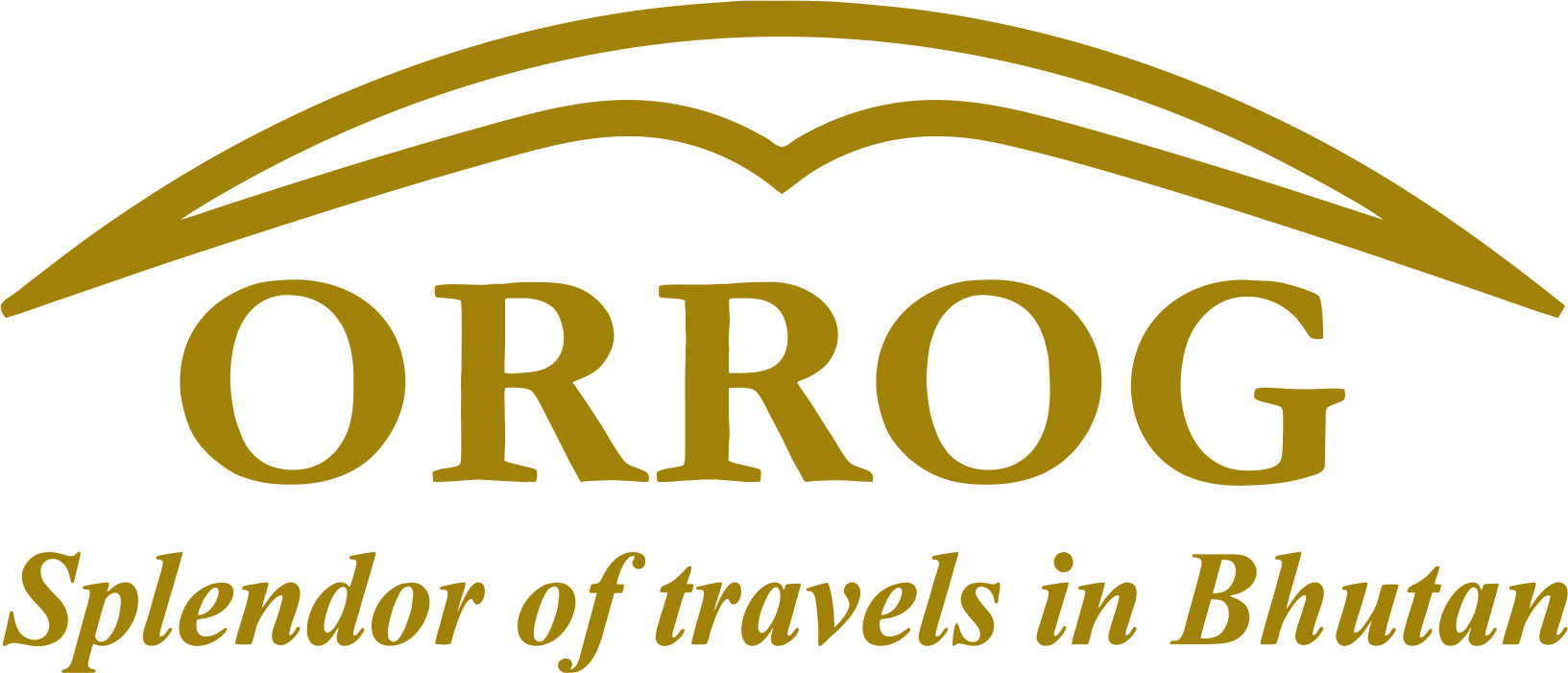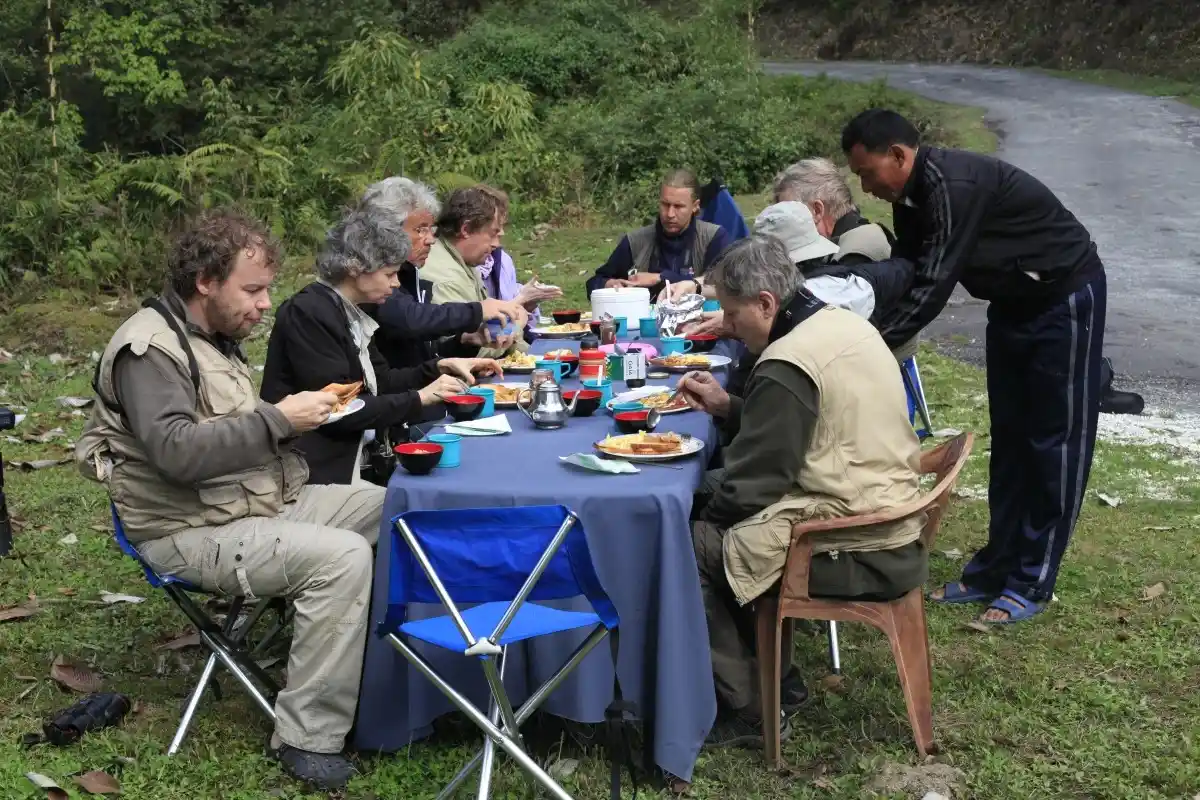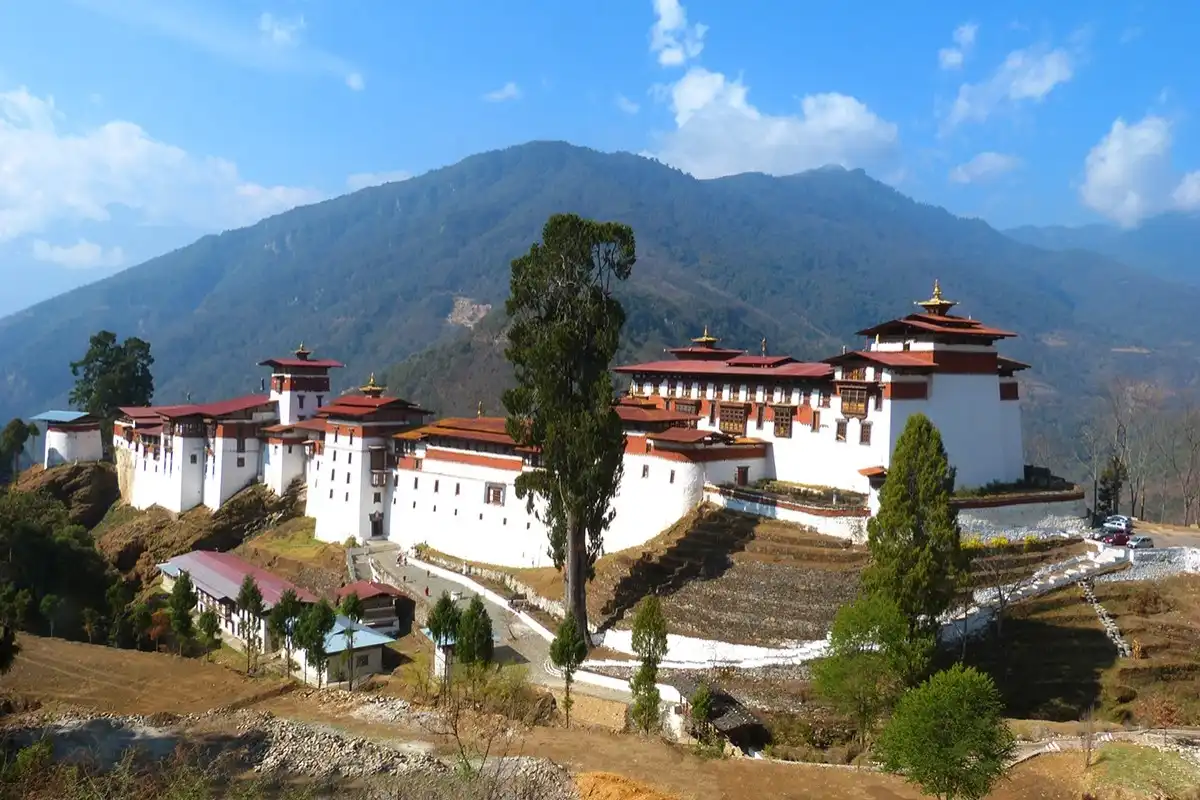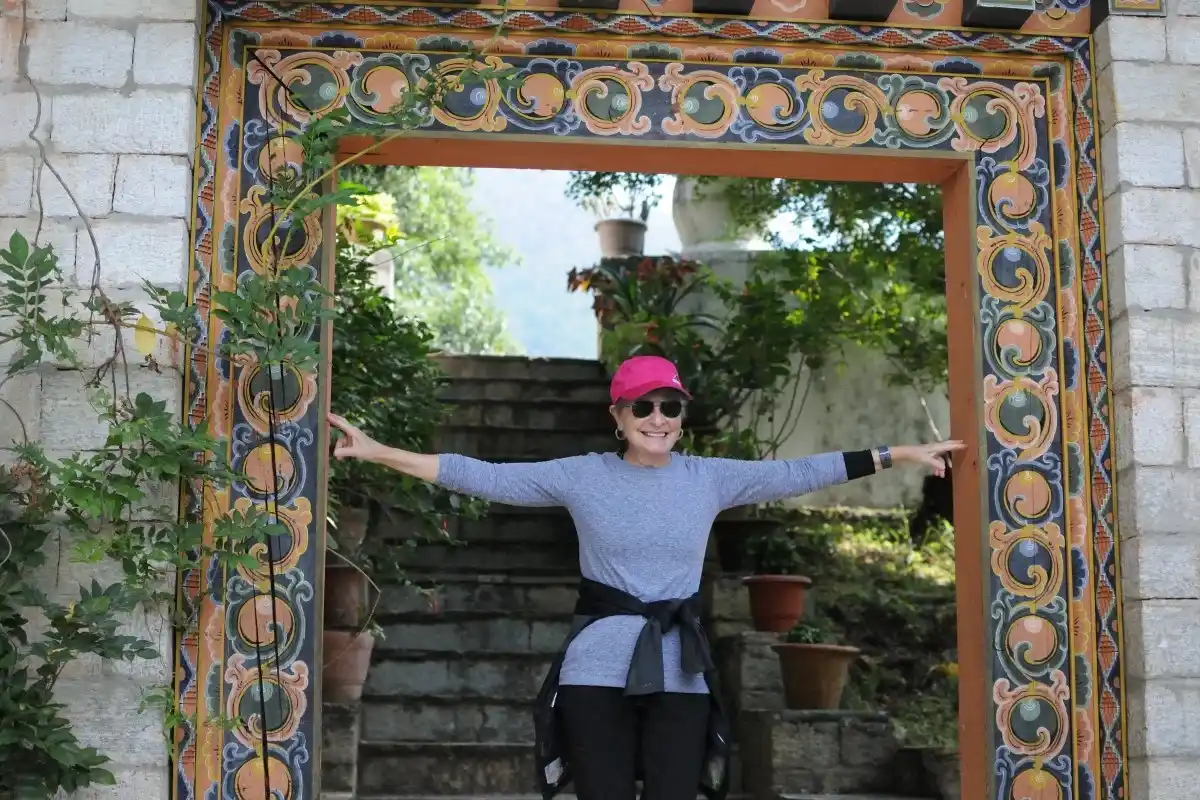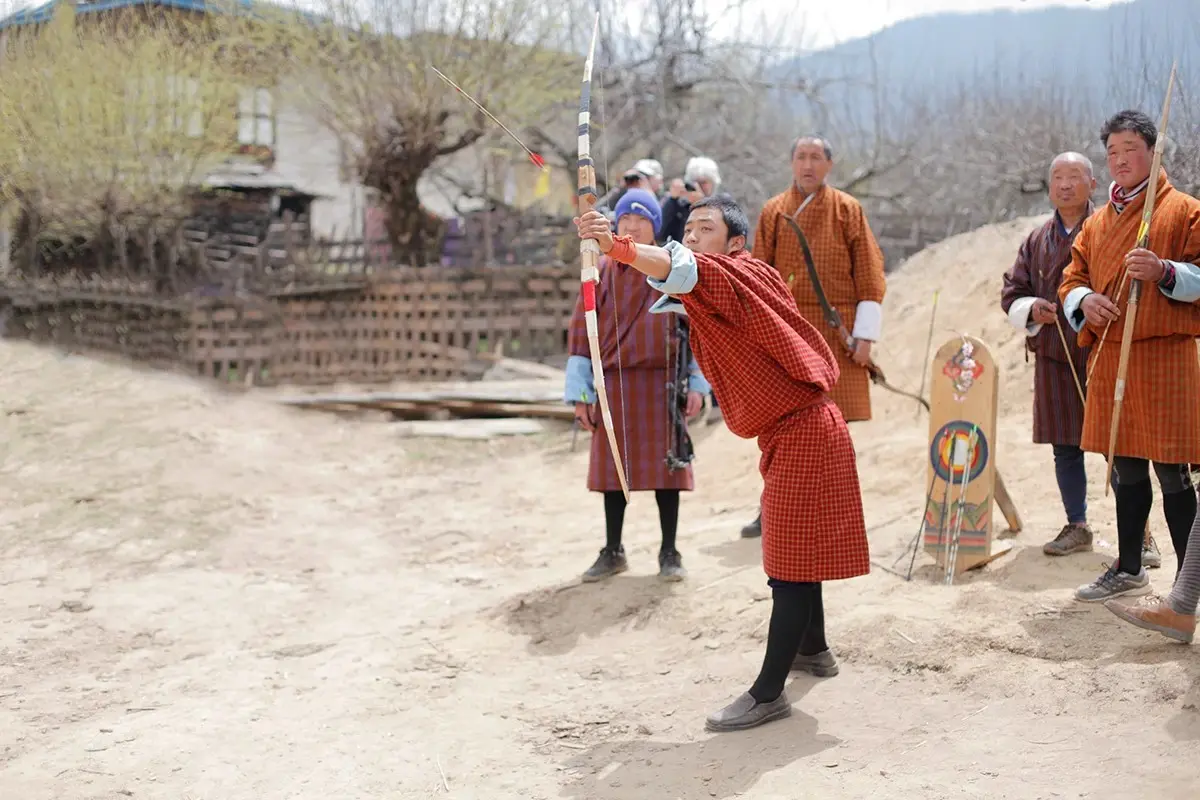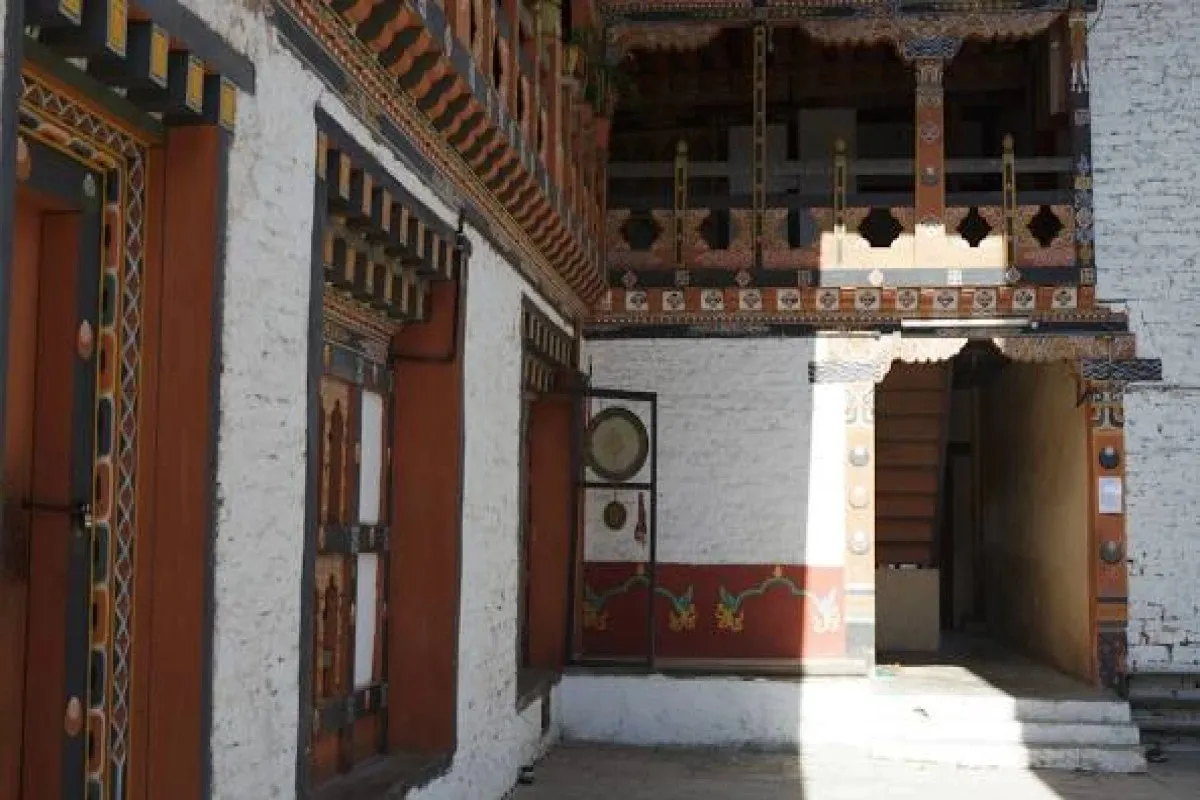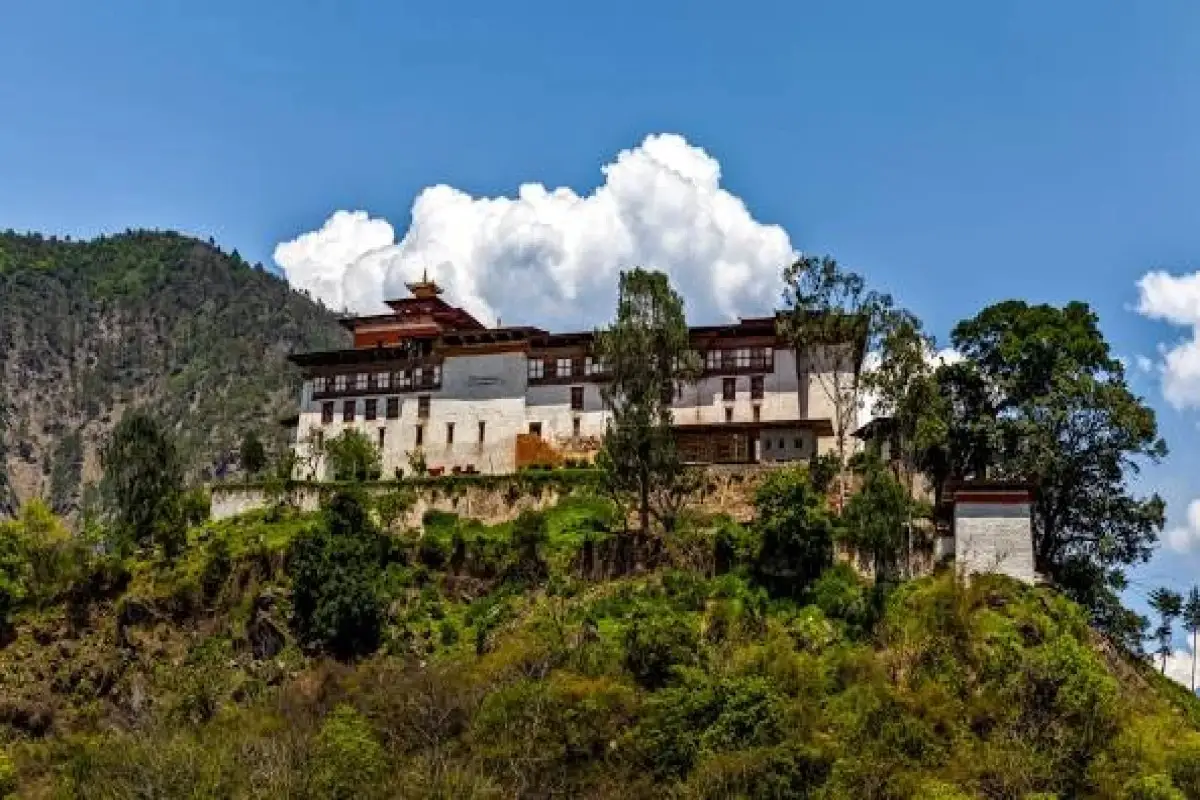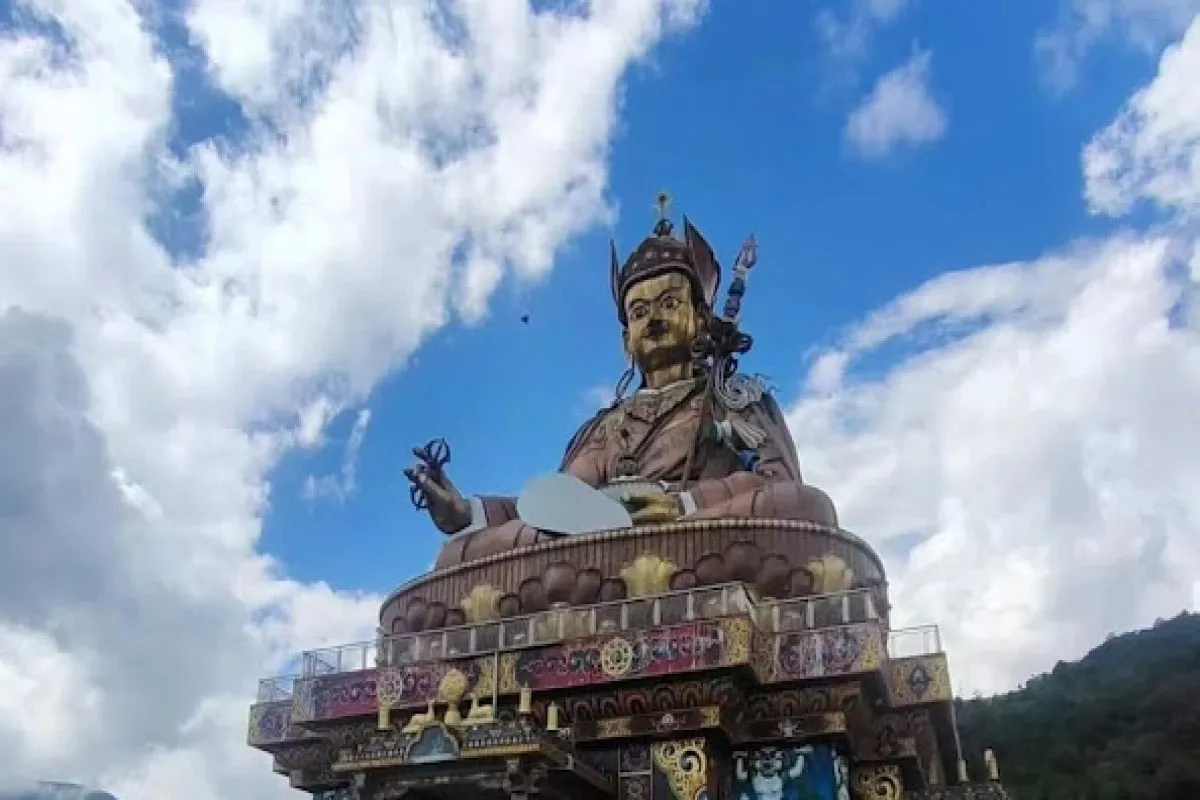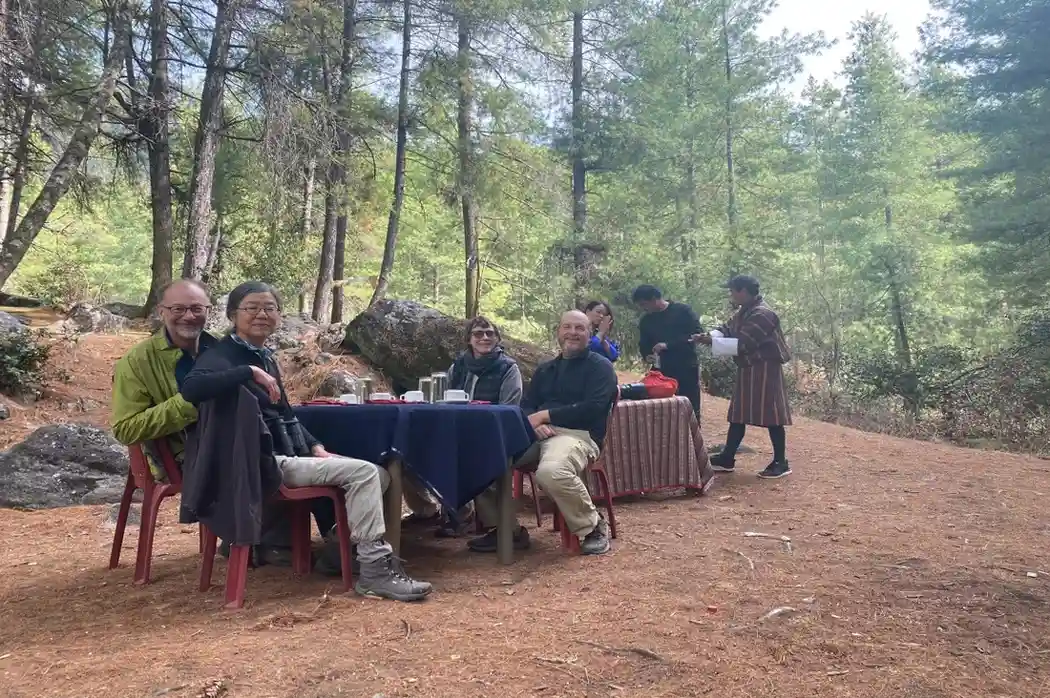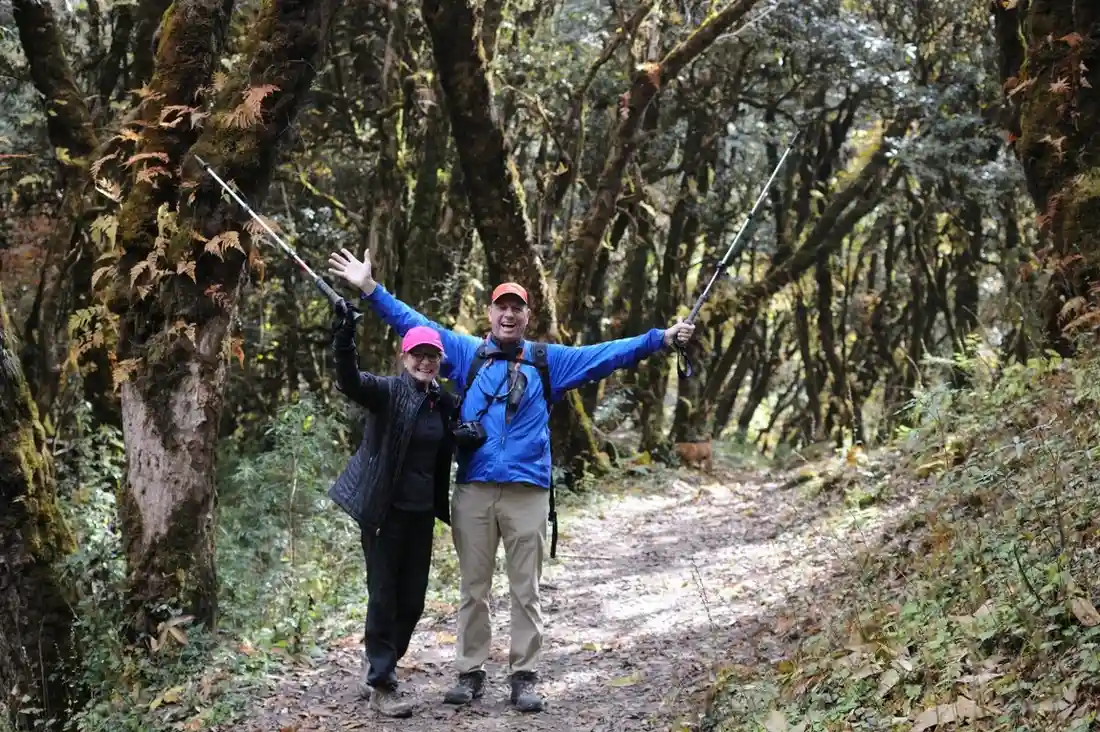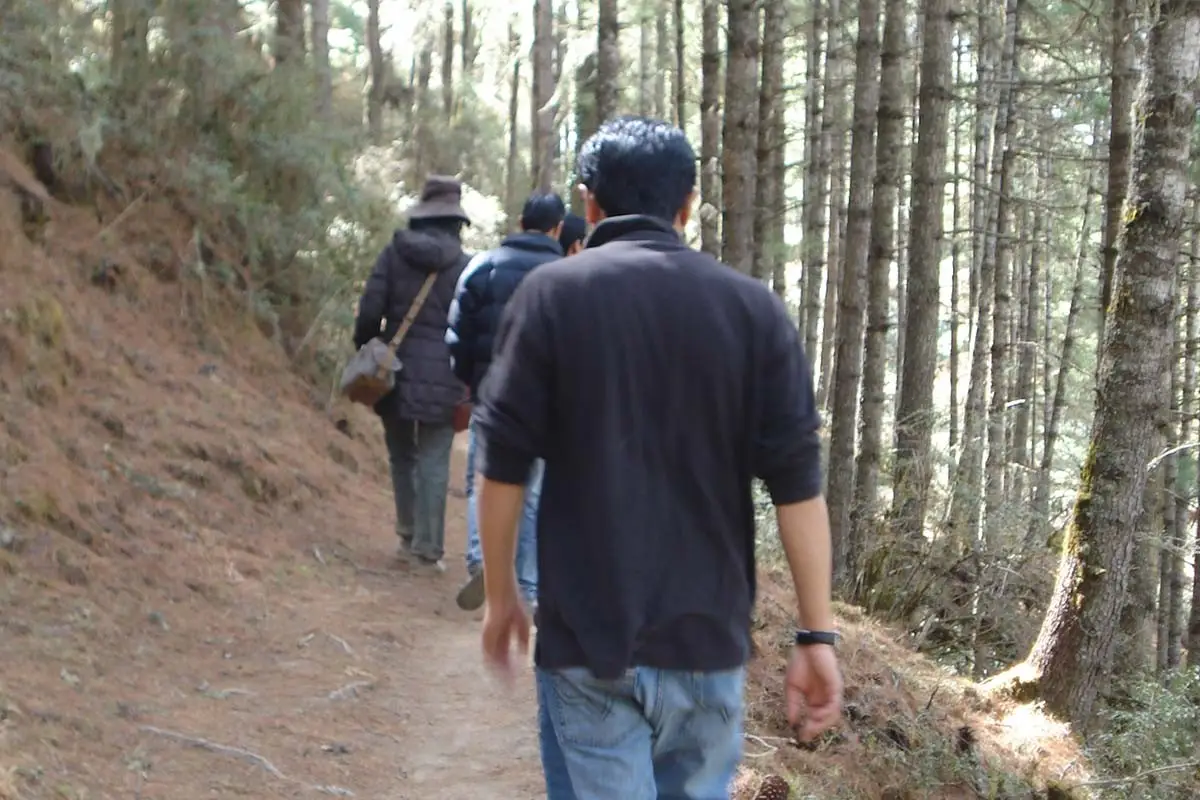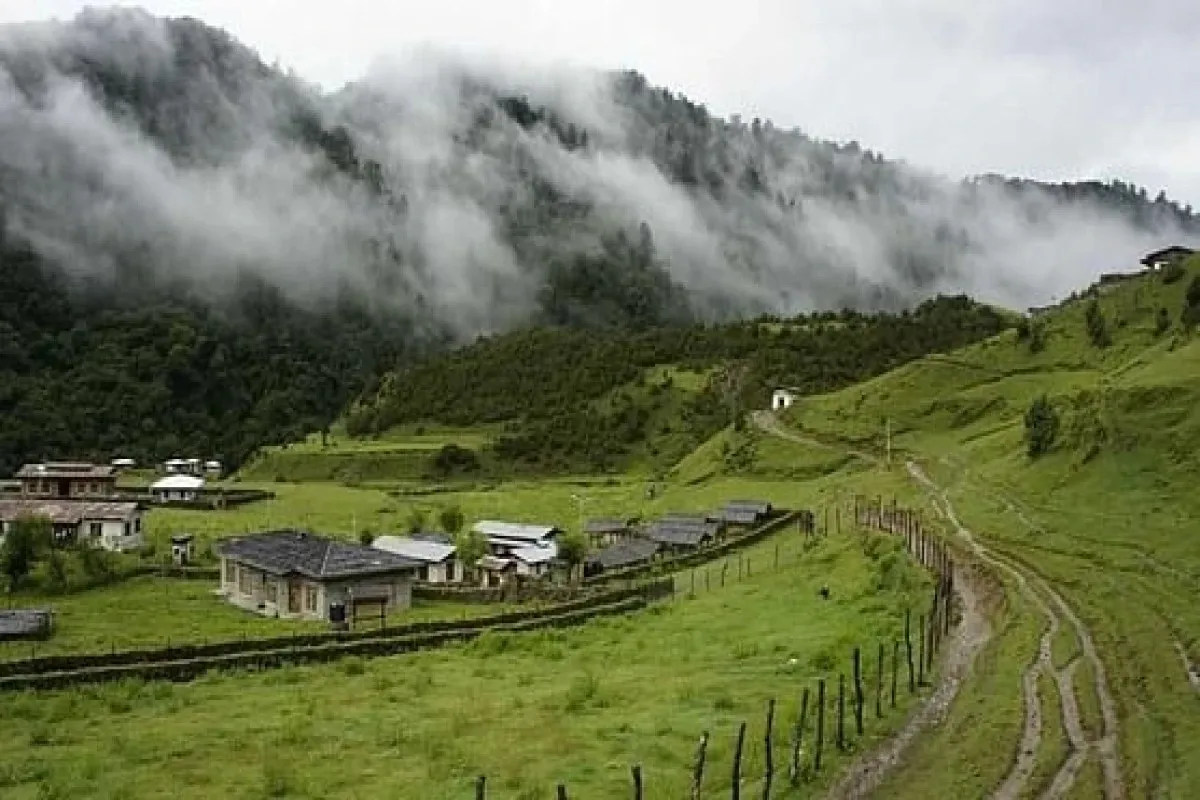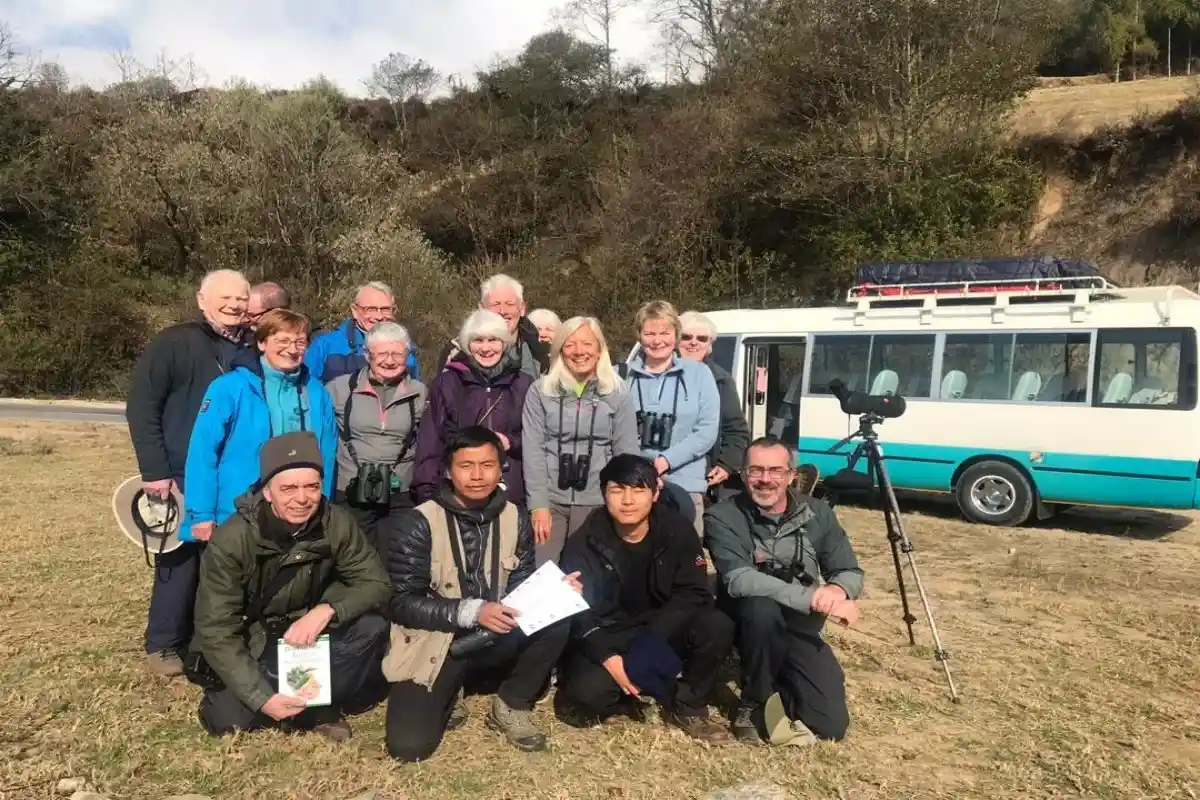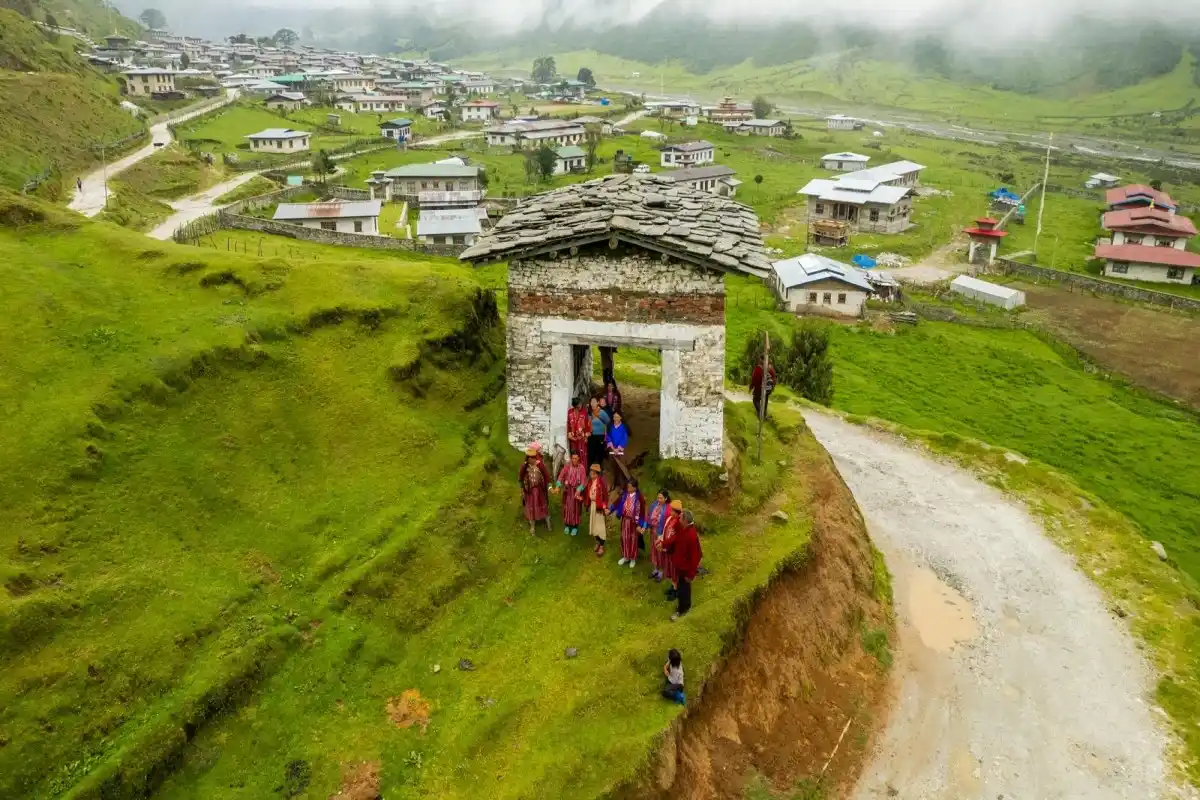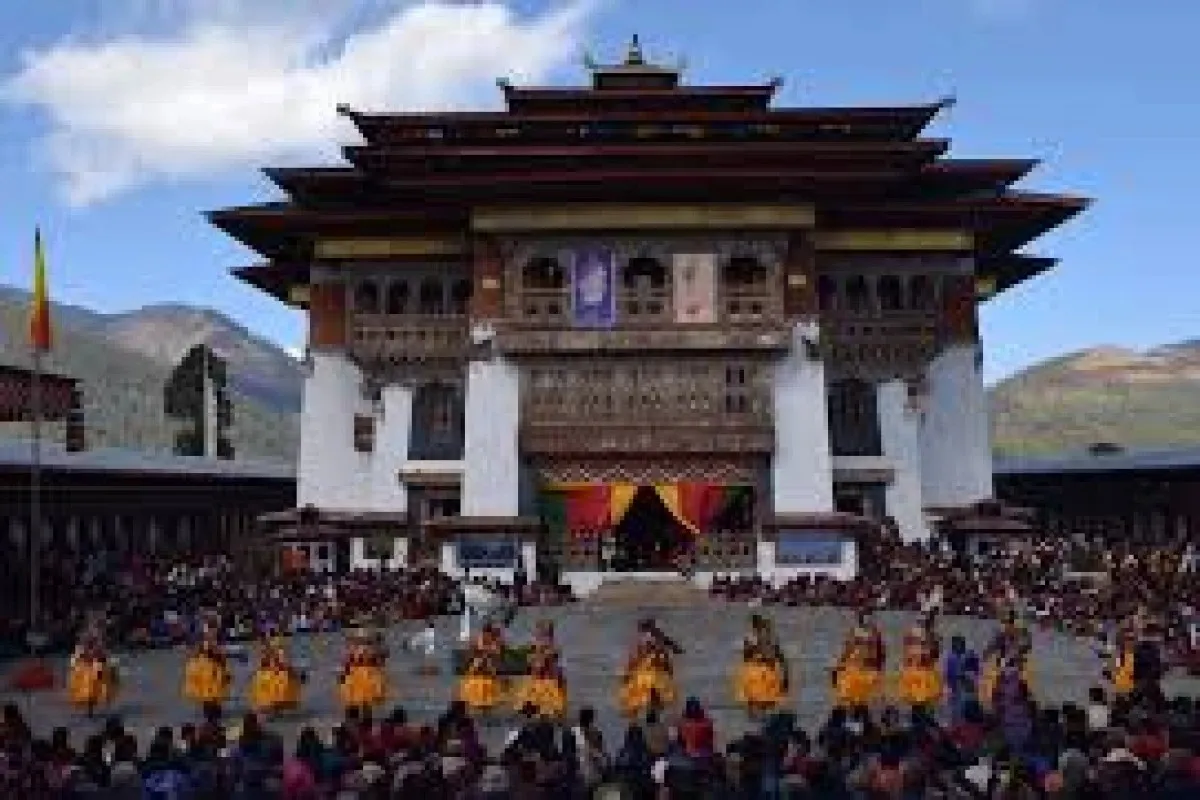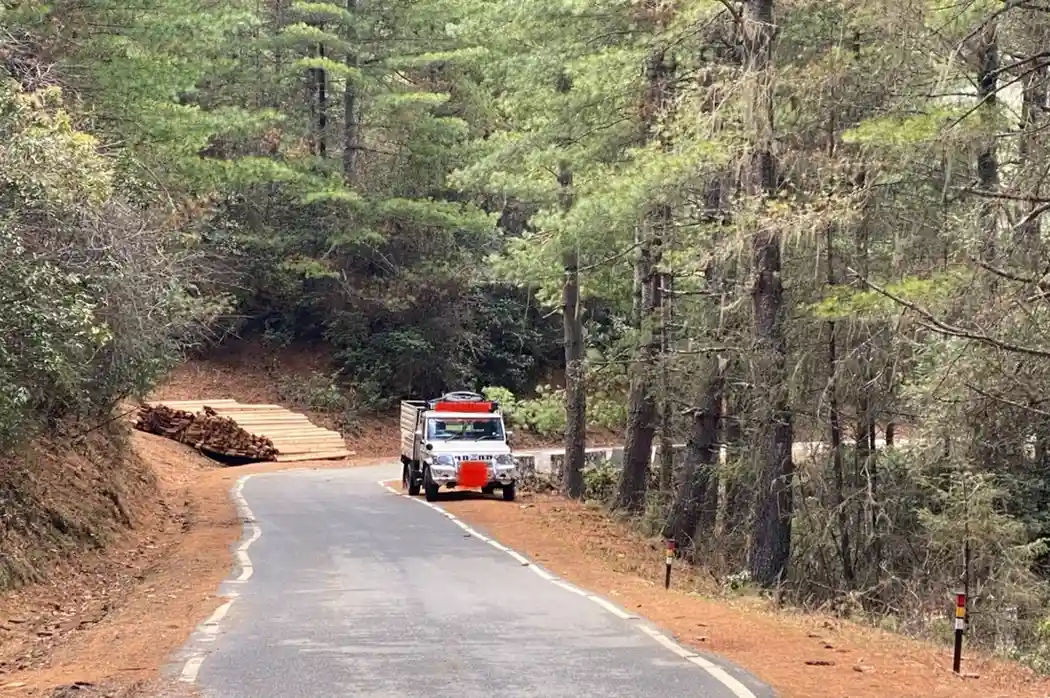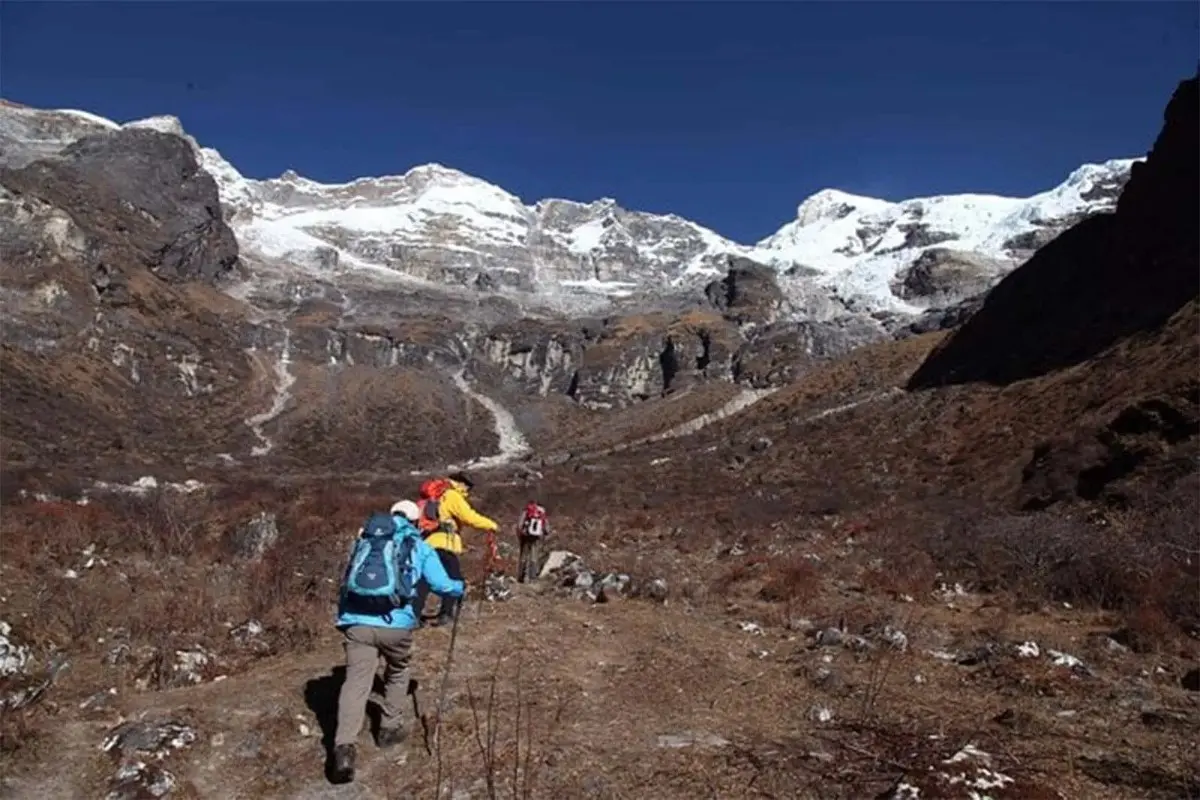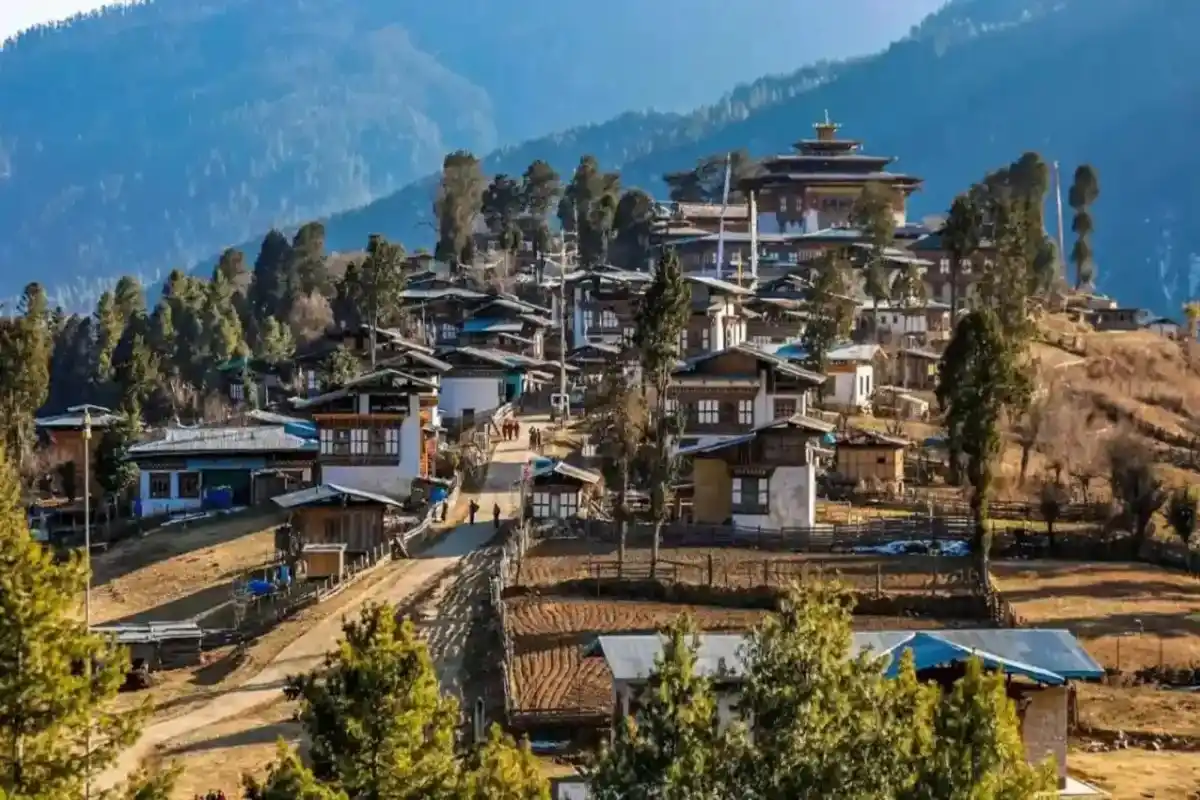Family Adventure Tour to Eastern Bhutan - 9 Days
Eastern Bhutan remains very undeveloped and allows for families to learn about the real Himalayan customs and environment. Your time in eastern Bhutan offers you the chance to visit valleys, stop at nearby villages, and visit amazing dzongs together with everyone in your group.
Highlights
- Comfort drive to Trashigang
- Visiting Mongar Dzong
- Meeting the Brokpa people in Merak Village
- Suspension bridge crossings and scenic drives
Trip Overview
Little tourism in this region means the culture and traditions have not changed much when compared to the West. During your trip, you will see Brokpa traditions, speak with community members, and admire Sakteng Wildlife Sanctuary. You will find here a relaxed place to stay, plus thrilling outdoor activities, which make it perfect for families who want both fun and excitement.
Because the area offers both warm, sheltered valleys and open, cool alpine meadows, it allows visitors to enjoy seeing wildlife, easy hikes, and explore the culture. Using a respected Bhutan trekking company will ensure your family stays safe and gets the best Bhutan trip. Both young and old visitors on this tour will remember special moments, experience time in nature, and learn about local cultures.
For 9 days in eastern Bhutan, this tour brings families together and showcases unique cultural experiences you won’t find elsewhere. Your carefully organized itinerary highlights both activities and comfort, so every member of the family can experience the country’s culture, animals, and wonderful nature. Touring dzongs, talking to people from the area, and exploring as a family all contribute to making your trip unique, help you see the world differently, and unite your family.
For a real family experience, Eastern Bhutan offers beautiful, unspoiled nature and welcoming people. By going on eco-tours, you get involved in helping the community and caring for the area’s cultural background. Being accompanied by professionals and staying at selected accommodations guarantees both comfort and safety, while you fully experience the culture.
What Makes This Area Worth Visiting
Being in Eastern Bhutan is a wonderful chance for families to see and learn about Himalayan culture in the most natural way. Unlike other well-known destinations, the area here has kept its traditional way of life for centuries. Traditional weaving is found in Lhuentse, and you can see yak herding with the Brokpa, both things your books might not cover.
Its great diversity of life makes the region a great place for learning about conservation and animals. In the Sakteng Wildlife Sanctuary, families can look at endangered animals in their own habitats. Doing environmental work while learning prepares you to value conservation and gives you unique encounters with wild creatures.
Safety and comfort combine perfectly in eastern Bhutan, where crime rates are virtually non-existent and local communities welcome visitors with genuine warmth. The infrastructure, while maintaining traditional character, provides necessary modern amenities, ensuring family comfort throughout the journey. Professional guides ensure safety during all activities while sharing invaluable local knowledge.
The spiritual atmosphere of eastern Bhutan offers families a chance to experience inner peace and mindfulness together. Ancient monasteries, meditation practices, and Buddhist philosophies provide opportunities for family bonding away from digital distractions. Children often find these experiences transformative, developing an appreciation for different cultures and spiritual practices.
This Bhutan adventure trip creates shared family memories through unique experiences impossible to replicate elsewhere. From crossing traditional suspension bridges to participating in local festivals, every moment becomes a story to cherish forever.
Major Highlights of Eastern Bhutan Family Tour
If you are looking for a trip with your family in Bhutan, Eastern Bhutan is a perfect destination to enjoy with your family. During the Eastern Bhutan Family Tour, you will get to explore different cultural sites along with natural habitats along the way.
Explore Sacred places
Bhutan’s eastern areas include sites picked just for families to make their holiday fun for everybody. Along the road, you will admire the appealing dzongs: Trashigang Dzong, Mongar Dzong, and Lhuentse Dzong, which all hold different parts of the nation’s story. They are important for both governing matters and religious practices, which show how the society managed its affairs and faith.
Wildlife Sanctuary Experience
The sanctuary has gained fame for giving help to red pandas, Himalayan black bears, and the yeti. Those on a park tour visit the rhododendron forests with their families, look at the birds there, and discover ways to protect the environment. The nature there is so well preserved that photography and learning about the environment are possible.
Explore local culture
Engaging with local cultures is very special, especially in Merak Village, where the Brokpa people maintain a way of life different from others. The one-of-a-kind costumes, yak-rearing practices, and enduring old customs will catch the attention of children. Traveling this way allows tourists to interact in ways that are difficult to find in typical tourist activities.
Relaxing moments with Family
Activities such as walking through various ecosystems, going to farms for a view of daily life, and driving through the country’s beautiful areas await families during adventures to Bhutan. The schedule provides time for activity as well as time to relax, letting your whole family take part in everything.
Conclusion
This tour provides children and adults with experiences that help them notice and value different cultures around the world. The religious ambiance, as well as fun outside activities and amazing nature, draws visitors from all parts of the globe.
Picking eastern Bhutan for a family trip allows you to invest in unforgettable times and memories your whole family will always share. The true culture, lovely scenery, and warm hospitality make it a popular travel choice for families. Everyone who joins this Bhutan adventure is likely to have their needs met, and remember this trip as one of the best experiences in an untouched part of the world.
Little tourism in this region means the culture and traditions have not changed much when compared to the West. During your trip, you will see Brokpa traditions, speak with community members, and admire Sakteng Wildlife Sanctuary. You will find here a relaxed place to stay, plus thrilling outdoor activities, which make it perfect for families who want both fun and excitement.
Because the area offers both warm, sheltered valleys and open, cool alpine meadows, it allows visitors to enjoy seeing wildlife, easy hikes, and explore the culture. Using a respected Bhutan trekking company will ensure your family stays safe and gets the best Bhutan trip. Both young and old visitors on this tour will remember special moments, experience time in nature, and learn about local cultures.
For 9 days in eastern Bhutan, this tour brings families together and showcases unique cultural experiences you won’t find elsewhere. Your carefully organized itinerary highlights both activities and comfort, so every member of the family can experience the country’s culture, animals, and wonderful nature. Touring dzongs, talking to people from the area, and exploring as a family all contribute to making your trip unique, help you see the world differently, and unite your family.
For a real family experience, Eastern Bhutan offers beautiful, unspoiled nature and welcoming people. By going on eco-tours, you get involved in helping the community and caring for the area’s cultural background. Being accompanied by professionals and staying at selected accommodations guarantees both comfort and safety, while you fully experience the culture.
What Makes This Area Worth Visiting
Being in Eastern Bhutan is a wonderful chance for families to see and learn about Himalayan culture in the most natural way. Unlike other well-known destinations, the area here has kept its traditional way of life for centuries. Traditional weaving is found in Lhuentse, and you can see yak herding with the Brokpa, both things your books might not cover.
Its great diversity of life makes the region a great place for learning about conservation and animals. In the Sakteng Wildlife Sanctuary, families can look at endangered animals in their own habitats. Doing environmental work while learning prepares you to value conservation and gives you unique encounters with wild creatures.
Safety and comfort combine perfectly in eastern Bhutan, where crime rates are virtually non-existent and local communities welcome visitors with genuine warmth. The infrastructure, while maintaining traditional character, provides necessary modern amenities, ensuring family comfort throughout the journey. Professional guides ensure safety during all activities while sharing invaluable local knowledge.
The spiritual atmosphere of eastern Bhutan offers families a chance to experience inner peace and mindfulness together. Ancient monasteries, meditation practices, and Buddhist philosophies provide opportunities for family bonding away from digital distractions. Children often find these experiences transformative, developing an appreciation for different cultures and spiritual practices.
This Bhutan adventure trip creates shared family memories through unique experiences impossible to replicate elsewhere. From crossing traditional suspension bridges to participating in local festivals, every moment becomes a story to cherish forever.
Major Highlights of Eastern Bhutan Family Tour
If you are looking for a trip with your family in Bhutan, Eastern Bhutan is a perfect destination to enjoy with your family. During the Eastern Bhutan Family Tour, you will get to explore different cultural sites along with natural habitats along the way.
Explore Sacred places
Bhutan’s eastern areas include sites picked just for families to make their holiday fun for everybody. Along the road, you will admire the appealing dzongs: Trashigang Dzong, Mongar Dzong, and Lhuentse Dzong, which all hold different parts of the nation’s story. They are important for both governing matters and religious practices, which show how the society managed its affairs and faith.
Wildlife Sanctuary Experience
The sanctuary has gained fame for giving help to red pandas, Himalayan black bears, and the yeti. Those on a park tour visit the rhododendron forests with their families, look at the birds there, and discover ways to protect the environment. The nature there is so well preserved that photography and learning about the environment are possible.
Explore local culture
Engaging with local cultures is very special, especially in Merak Village, where the Brokpa people maintain a way of life different from others. The one-of-a-kind costumes, yak-rearing practices, and enduring old customs will catch the attention of children. Traveling this way allows tourists to interact in ways that are difficult to find in typical tourist activities.
Relaxing moments with Family
Activities such as walking through various ecosystems, going to farms for a view of daily life, and driving through the country’s beautiful areas await families during adventures to Bhutan. The schedule provides time for activity as well as time to relax, letting your whole family take part in everything.
Conclusion
This tour provides children and adults with experiences that help them notice and value different cultures around the world. The religious ambiance, as well as fun outside activities and amazing nature, draws visitors from all parts of the globe.
Picking eastern Bhutan for a family trip allows you to invest in unforgettable times and memories your whole family will always share. The true culture, lovely scenery, and warm hospitality make it a popular travel choice for families. Everyone who joins this Bhutan adventure is likely to have their needs met, and remember this trip as one of the best experiences in an untouched part of the world.
Short Itinerary
Arrive at Paro and drive to Trashigang, visit the Dzong, and explore the markets with a local dinner.
Scenic drive to Mongar, village visits, Mongar Dzong, and observe monk prayers.
Visit Lhuentse’s weaving centers, explore the fortress, and enjoy traditional games.
Travel to Merak, experience Brokpa culture, yak herding, and community homestay.
Visit wildlife sanctuary, nature walks, photography, and evening fire stories.
Family hikes, wildlife spotting, local ecology learning, and an evening village festival.
Return to Mongar via Khaling, farm visit, picnic lunch, Bhutanese dinner.
Back to Trashigang, join cooking class, local games, farewell ceremony.
Final shopping and reflections, return to Thimphu, transfer to the airport
Price Includes
- Pick-up and drop-off services
We provide a pick-up service from the airport to the hotel on your arrival day and from the hotel to the airport on the departure day.
- Lunch, Breakfast, and Dinner
All meals during the trek will be provided by the company. However, personal food items like coffee, tea, cold drinks, etc, are not included in the package.
- A guide proficient in English
A certified, English-speaking guide will accompany you throughout the trip. The guide will offer information about the trail, culture, nature, and history, and ensure your safety and a smooth experience.
- Comfortable SUV vehicle
A private SUV will be used for road travel before or after the trek. These vehicles are ideal for Bhutan’s hilly terrain and provide a comfortable ride.
- All types of entry costs
This covers all permit fees, monument entrance fees, park fees, and any other official charges required for trekking or sightseeing activities during the tour.
- Professional Drive
We ensure a safe and smooth drive during your tour. We have licensed and experienced drivers for that.
- Sleeping bag and tent
Quality sleeping bags and tents are provided for your comfort and warmth during the camping nights on the trek. So, you don’t have to worry about buying a new one.
- Farewell dinner
A special farewell meal, typically arranged in a traditional restaurant, is offered at the end of the tour to celebrate the journey and thank the participants.
- Evening Tea/coffee with snacks
Each evening, you’ll be served tea or coffee along with light snacks like biscuits and popcorn.
- Drinking Water
Safe and clean drinking water is provided throughout the trek
- Pick-up and drop-off services
We provide a pick-up service from the airport to the hotel on your arrival day and from the hotel to the airport on the departure day.
- Lunch, Breakfast, and Dinner
All meals during the trek will be provided by the company. However, personal food items like coffee, tea, cold drinks, etc, are not included in the package.
- A guide proficient in English
A certified, English-speaking guide will accompany you throughout the trip. The guide will offer information about the trail, culture, nature, and history, and ensure your safety and a smooth experience.
- Comfortable SUV vehicle
A private SUV will be used for road travel before or after the trek. These vehicles are ideal for Bhutan’s hilly terrain and provide a comfortable ride.
- All types of entry costs
This covers all permit fees, monument entrance fees, park fees, and any other official charges required for trekking or sightseeing activities during the tour.
- Professional Drive
We ensure a safe and smooth drive during your tour. We have licensed and experienced drivers for that.
- Sleeping bag and tent
Quality sleeping bags and tents are provided for your comfort and warmth during the camping nights on the trek. So, you don’t have to worry about buying a new one.
- Farewell dinner
A special farewell meal, typically arranged in a traditional restaurant, is offered at the end of the tour to celebrate the journey and thank the participants.
- Evening Tea/coffee with snacks
Each evening, you’ll be served tea or coffee along with light snacks like biscuits and popcorn.
- Drinking Water
Safe and clean drinking water is provided throughout the trek
Price Excludes
- International Airfare
- Visa Charges and Insurance
- Individual expenditures
- Additional-day lodging
- Laundry and telephone expenses
- Tips for the guide and the porter
- International Airfare
- Visa Charges and Insurance
- Individual expenditures
- Additional-day lodging
- Laundry and telephone expenses
- Tips for the guide and the porter
Family Adventure Tour to Eastern Bhutan Itinerary
You start your trip by driving to Trashigang, where families check in, then head to see the wonderful Trashigang Dzong. The views from the impressive fortress span all the nearby valleys and are a wonderful way to learn about the country’s architecture. During the afternoon, kids have fun meeting friendly sellers in the markets and trying some local snack treats. The cultural session we offer in the evening makes sure families are ready for the week and get to taste traditional Bhutanese food.
The trip to Mongar shows different parts of eastern Bhutan, such as subtropical valleys and temperate forests. At family stops, you’ll visit typical villages and watch the locals produce handicrafts and perform farming activities. Mongar Dzong is worth exploring in the afternoon, and if you’re there, monks will often let you observe their prayer services. Families stay in rooms with comfortable beds and wonderful views of the valley.
You will visit Lhuentse, exploring unique weaving centers to watch expert weavers at work. Youngsters get a lesson in natural dyes, while adults notice the fine workmanship. Guided tours during your visit to Lhuentse tell you about the fortress’s background as well as its buildings and features. Evenings offer the chance to join in traditional games as well as see performances by the local people.
The visit to Merak gives families a look into the local Brokpa culture by joining village walks and spending time with people in the community. Watching yak herding action entertains children and gives adults an introduction to ways of sustainable life in the Himalayas. Family tourists can visit traditional Brokpa homes to join in cultural exchange, partake in shared meals, and understand old traditions. Using community guesthouses gives visitors a chance to get close to local culture.
Today, tourists explore the sanctuary on guided tours and get to see red pandas, birds, and different plants. Trails for families let everyone join in, and guides who have experience offer information on conservation. Families can take photographs and respect wildlife habitats during photography workshops. Evenings are spent around the fire listening to both local legends and success tales about conservation efforts.
There are easy hiking spots for families that pass through different habitats where you learn about plants as you walk. Viewpoints at rest stops allow you to enjoy a lunch break with great scenery and watch for wildlife. Guides native to the area train families in local ecology and keep them safe. The journey finishes with people gathering in local towns for nighttime festivals.
Day 7 of your Family Adventure Tour to Eastern Bhutan will be a drive back to Mongar with beautiful views of the remote eastern villages. In addition to the drive back, you will be stopping in Khaling Village to see traditional weaving and local communities, where you can observe the rural Bhutanese lifestyle. You will enjoy a picnic lunch in nature and a stop at a local farm, where your family can participate in some hands-on activities, such as picking vegetables or feeding animals. At the end of the day, enjoy a warm Bhutanese dinner, and an overnight stay in Mongar, where you can cultivate cultural insight and relaxation.
Returning to Trashigang, families engage in deeper cultural exchanges with local families, participating in daily routines and traditional cooking classes. Children learn traditional games while adults understand Bhutanese family structures and social systems. Market visits include purchasing authentic handicrafts and supporting local economies. Farewell ceremonies celebrate the completed adventure with traditional music and dance.
The final morning is spent on some last shopping and gathering to remember the best moments from their trip. Returning to Thimphu again gives chances to enjoy the beautiful views of eastern Bhutan. Being transferred from the airport makes the trip more comfortable, and families can look back on their true Bhutan experience for years to come.
Know Before You Travel
-
Being in Eastern Bhutan:
You begin your trip in Trashigang. Visitors not from the area fly into Paro and then head to Trashigang, which is the main commercial area for the eastern part of Bhutan. Trashigang Dzong, which towers over the Gamri River, is an important example of Bhutan’s unique architecture. Set up in 1659, the fortress-monastery at Paro has government offices and living spaces for monks, illustrating the way politics are shared in Bhutan. There are lively deals to be had each weekend, with sellers offering colorful handicrafts and chilies.
Those visiting Mongar admire its position in the country and the older Mongar Dzong, which was finished in 1930. Architectural elements from the past are highlighted in the dzong’s new design. Families like to hike in the surrounding terraced land and see how villagers still use traditional methods of farming.
Master weavers in Lhuentse create the famous Kushuthara fabric, which is used only by the royal family. Standing high over the Kuri Chhu valley, the remote Lhuentse Dzong was built in 1654. Weaving centers provide families the chance for children to observe how these items are crafted by hand and to learn about local traditions.
Merak Village gives visitors the opportunity to meet the Brokpa, people who keep their ancient customs as yak herders in this area. The special clothing, different language, and old customs allow for outstanding cultural experiences with these groups. Dedicated learning groups are excited by the yaks and the environmentally friendly practices found in the community.
Sakteng Wildlife Sanctuary covers forests that preserve both endangered and legendary species. These trails are made for families and lead hikers through rhododendron forests and adjoining alpine areas that are habitats for wildlife. The sanctuary’s conservation efforts include teaching people about why environmental protection and biodiversity matter.
family-adventure-tour-to-eastern-bhutan-9-days
Download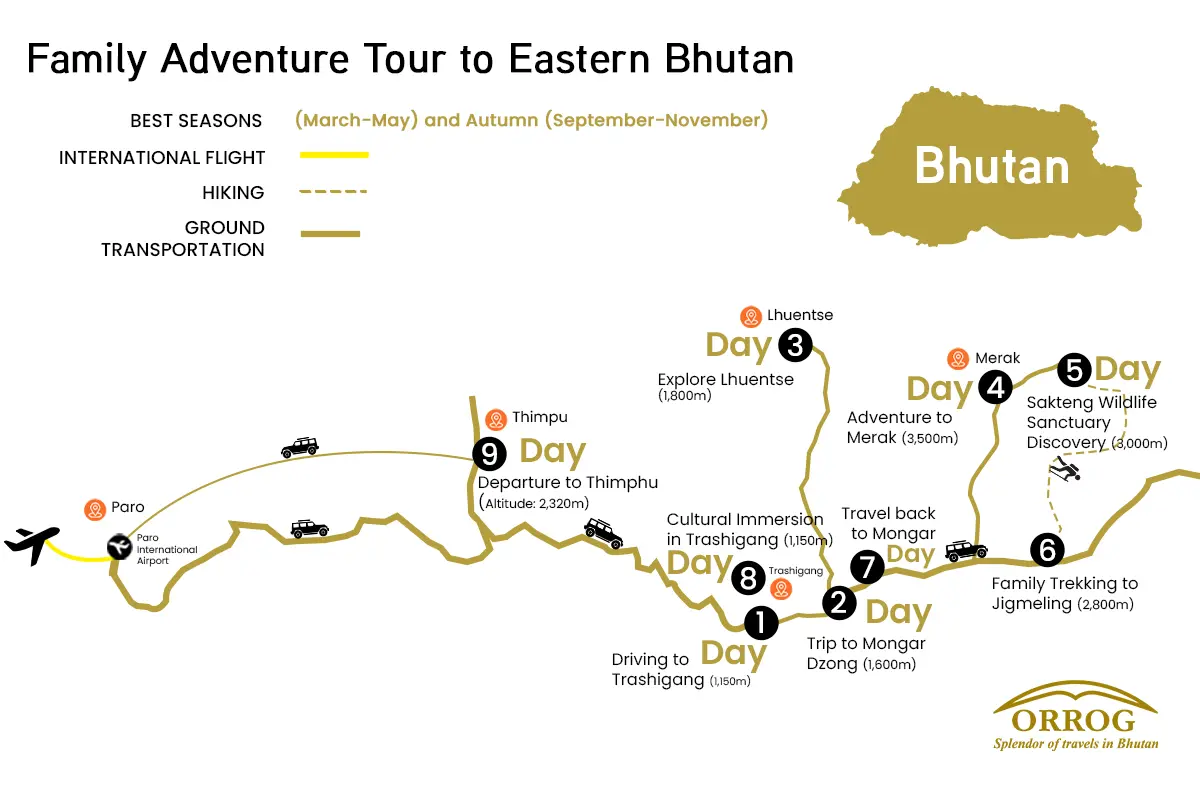
Family Adventure Tour to Eastern Bhutan
FAQs for Family Adventure Tour to Eastern Bhutan
At that time of year, it is especially comfortable to go on outdoor adventures with your family in eastern Bhutan. The glowing flowers, pleasant weather, and great views make spring a perfect time to go walking elsewhere. It is simpler to see wild animals in the Sakteng Wildlife Sanctuary between March and May. To be certain, planning for bookings and permits is a good idea.
Eastern Bhutan maintains extremely low crime rates, with local communities known for welcoming attitudes toward visitors. Professional guides ensure family safety during all activities, while emergency communication systems provide additional security. Local medical facilities handle minor issues, while serious emergencies can access evacuation services to better-equipped hospitals in western Bhutan.
This adventure tour accommodates average family fitness levels with optional activities for more adventurous participants. Daily walks rarely exceed 2-3 hours with rest stops and flexible pacing. Families with mobility concerns can enjoy cultural sites and scenic drives while more active members participate in extended hikes. Professional guides assess family capabilities and adjust activities accordingly.
Activities on the family tour are suitable for children aged six years and up, and all are modified to fit everyone correctly. Young children are happy with cultural activities and short walks, but older kids go for more extreme hikes and watch animals. Having professional guides means every member of the family can have a safe and suitable experience during the trip.
Good walking shoes, different warm and cool clothes, a raincoat if the weather is uncertain, and sunscreen when in the mountains will be useful. It helps young travelers to bring their favorite snacks, have things to entertain them on the journey, and keep any required medications near them at all times. Besides that, you should carry a camera, binoculars, and a bottle you can use again and again to stay protected and help preserve nature.
Bhutanese dishes include many choices for vegetarians, and dishes made with rice are ideal for people with other food restrictions. Professional guides make sure all local cooks and restaurants know about any dietary needs, so families can eat good food safely during their journey. More options for foreign cuisines can be had in cities, although eating traditional dishes gives you a real feel for the culture.
Bhutan follows Bhutan Time (BTT), which is GMT +6 hours.
No, Bhutan does not use daylight saving time.
Yes, if your phone has roaming and automatic time settings enabled.
Bhutan is 15 minutes ahead of Nepal and 30 minutes ahead of India.
Both 12-hour and 24-hour formats are commonly used. Clarify with your guide if unsure.
You need a visa and all necessary permits for your trip. These documents can not be received on the day of your arrival, so they must be processed before coming here. After you book a trip with us, we will manage these papers for you. Your Bhutan visa is arranged by Orrog as part of the package.
The main way to come to Bhutan is through Paro International Airport, which is well-connected to cities like Bangkok, Delhi, Kathmandu, and Singapore. Most people arrive by air, but if you plan to come via road, you can enter through Phuentsholing, located on the southern border with India, which is the most commonly used entry point.
It is recommended to apply for the visa at least 20 days before your planned departure date so that there is enough time for processing your Bhutan visa, finalizing your itinerary, and arranging your guides and transportation. Although visa processing itself is relatively fast once payment is received, early preparation helps avoid delays and ensures availability, especially during peak seasons (spring and autumn).
You don’t require a passport-size photo for the visa, but it is wise to carry at least 2–4 recent passport-sized photographs during your trip. These may be needed for local permits, registration, or when applying for a local SIM card upon arrival in Bhutan.
Yes, you can lengthen your stay in Bhutan either before or after your trip. Bhutan’s tourism model requires visitors to pay a Sustainable Development Fee (SDF) and a daily package cost, so any extra days will involve additional charges. Extensions are a great opportunity to explore cultural sites in Paro, Thimphu, or even add another short trip or day hike.
Yes, Bhutan requires full tour payment in advance before your visa can be processed and issued. The government of Bhutan regulates this policy to ensure that all travel arrangements are confirmed through a licensed Bhutanese tour operator. We are a licensed tour operator that ensures you have everything you need for a trouble-free trip.
Any personal expenses are not covered in the package like:
- Tips for your guide and other staff
- Bottled drinks and snacks(personal expense)
- Souvenirs or local crafts
Credit cards are easily accepted in major cities like Paro and Thimphu. But in remote areas, you may not have access to a card or an ATM. So, it is best to carry some cash before heading for the trip.
Tipping is not mandatory, but it is a widely appreciated gesture and a customary way to show gratitude for good service. The tipping guideline would be to give USD 5-10 per day as a tip for the guides and other staff.
Paro International Airport is the only international airport in Bhutan. It is well connected by flights from cities like Bangkok, Delhi, Kathmandu, and Singapore.
Yes, airport pick-up and drop-off are included in the package. We will have your guide and driver meet you at the airport and transport you to your hotel.
While Bhutan's roads are mostly paved, some parts are narrow, winding, and occasionally affected by weather. However, we ensure your travel is safe, well-maintained, and driven by an experienced professional throughout the journey.
The Bhutanese Ngultrum is used in Bhutan. All local transactions during the trip will be in BTN.
US Dollars (USD) are generally accepted at larger hotels, souvenir shops, and tour operators, particularly in Paro and Thimphu. However, it’s advisable to convert your currency to BTN for general purchases in rural areas. Other currencies like the Euro or the Pound are not commonly accepted directly.
No, credit or debit cards are not accepted on the trip, as it takes you through remote regions with no banking or electronic payment access. All trip-related payments like accommodation, meals, permits, etc, are paid in advance.
You can exchange foreign currency at the Paro International Airport, at banks, or through licensed money changers in cities like Thimphu and Paro. It's best to exchange enough cash before heading out on the trip.
The national language is Dzongkha, but many Bhutanese also speak English. If you speak English and are worried about communicating with the local people, you will have your guide as a translator.
Yes, all licensed tour guides in Bhutan are required to speak fluent English. Many are also trained in other languages such as German, Japanese, or French. Communication during the trip will be smooth and clear in English.
Most signboards, tourist maps, and information brochures are written in English, especially in tourist destinations like Paro, Thimphu, and trailheads. Directional signs along routes are often labeled in both Dzongkha and English.
No, learning Dzongkha is not at all needed for the trip, but knowing a few basic words like "Kuzu zangpo la" (Hello) or "Kadrinche la" (Thank you) is a good way to interact with the locals.
Language barriers are minimal, as your guide will handle all communication with locals and support staff. Your guide will translate for you during your interaction with the locals.
To greet people, you can greet with locals “Kuzu zangpo la” (Hello) by performing a slight bow. Most common greetings include physical greetings, such as shaking hands less visible, especially in rural areas.
Yes, but remember to seek permission, especially when taking photos of monks, locals, or temples. Please note that clicking photos is not allowed at most religious sites.
Visitors should dress modestly and respectfully. This means:
- Covering shoulders and knees
- Removing hats and sunglasses
- Not wearing shorts or sleeveless tops
This applies to both men and women.
Yes, Bhutanese society is deeply rooted in Buddhism and tradition. Here are some key taboos:
- Do not point your feet at people or sacred objects
- Never touch anyone on the head, as it is considered sacred
- Walk clockwise around temples, stupas, and religious monuments
- Avoid public displays of affection
While gifts are not expected, they may be accepted graciously if given with respect. It is advisable to consult with the guide before giving out anything.
Bhutan typically uses Type C, Type D, and Type G electrical outlets. Standard safe voltage is 230V and frequency is 50Hz; therefore, ensure that your equipment is compatible with this voltage.
Indeed, it is highly advised to take along a universal travel adapter, particularly one to fit a variety of types of plugs, because plugs can be different in a hotel or a guesthouse.
Yes, souvenirs can be bought in Paro or Thimphu before or after the trip.
Some popular souvenirs include hand-woven textiles (kira and gho fabric), prayer flags, thangka (religious scroll) paintings, handmade paper products, traditional masks, and Buddhist artifacts.
You can do some gentle bargaining in local street markets. However, in government-run shops and fixed-price stores, prices are usually non-negotiable.
Only some larger shops in cities like Paro and Thimphu accept credit cards. The remote areas might not have a card payment option, so we suggest that you carry some cash.
Yes, you can easily purchase a SIM card upon arrival in Bhutan. We will assist you with the process, and you'll need a passport copy and a passport-sized photo.
No, internet access is not available during the trip. However, Wi-Fi is available in hotels in Paro and Thimphu before and after the trip.
Since the weather can be unpredictable and temperatures can vary drastically, layered clothing is essential. You should pack:
- Base layers (thermal tops and bottoms)
- Insulating layers like fleece or down jackets
- Waterproof and windproof outer layers
- Warm hats, gloves, and neck gaiters for freezing conditions
- Moisture-wicking socks and weatherproof trekking boots
Nighttime temperatures can be extremely cold, especially at high-altitude places. So you need to have enough clothing to keep you warm.
The weather is clear with mild daytime temperatures during spring and autumn.
Yes, all tours include certified, English-speaking guides who are knowledgeable in Bhutanese history and culture.
You can learn about the Bhutanese culture through local interactions, homestay visits, cooking classes, traditional art workshops, and attending local festivals and religious ceremonies.
Reviews & Ratings
-
Guarantee -
Thimphu,Bhutan -
975+17160228
Ready to Explore Bhutan?
Start your journey today and discover the magic of Bhutan with our expert guides and carefully crafted tours.
Book This Trip
-
No booking or credit card fees -
Best price guarantee -
Full customize trip
Ask a Question
Feel free to ask us anything about this tour. A travel expert will then get back to you as soon as possible
Ready to Explore Bhutan?
Start your journey today and discover the magic of Bhutan with our expert guides and carefully crafted tours.
